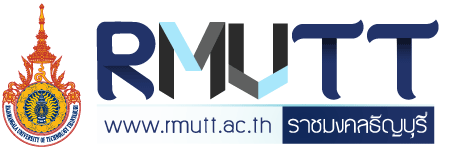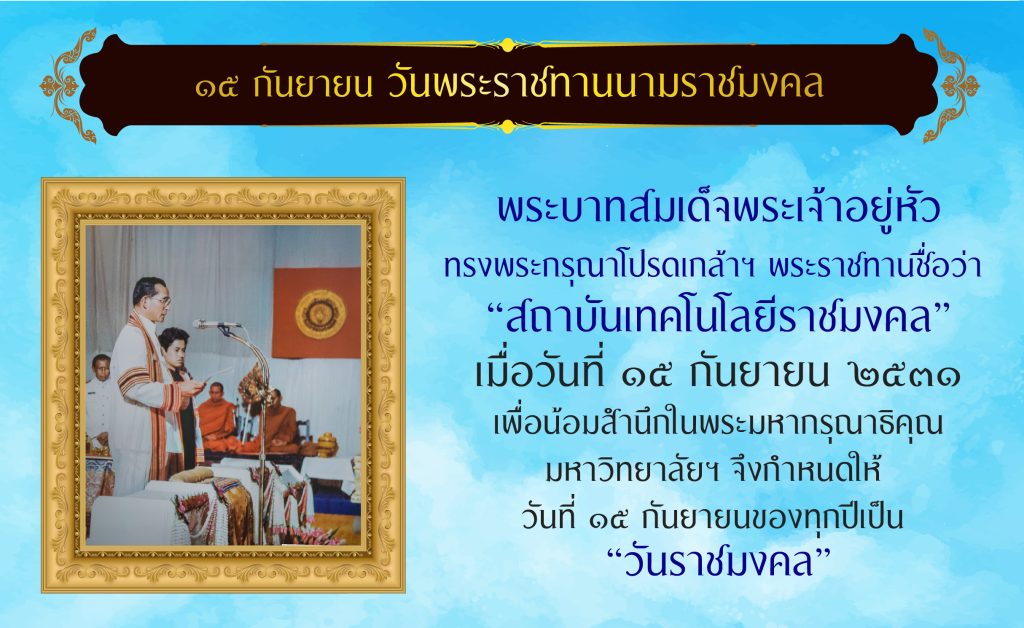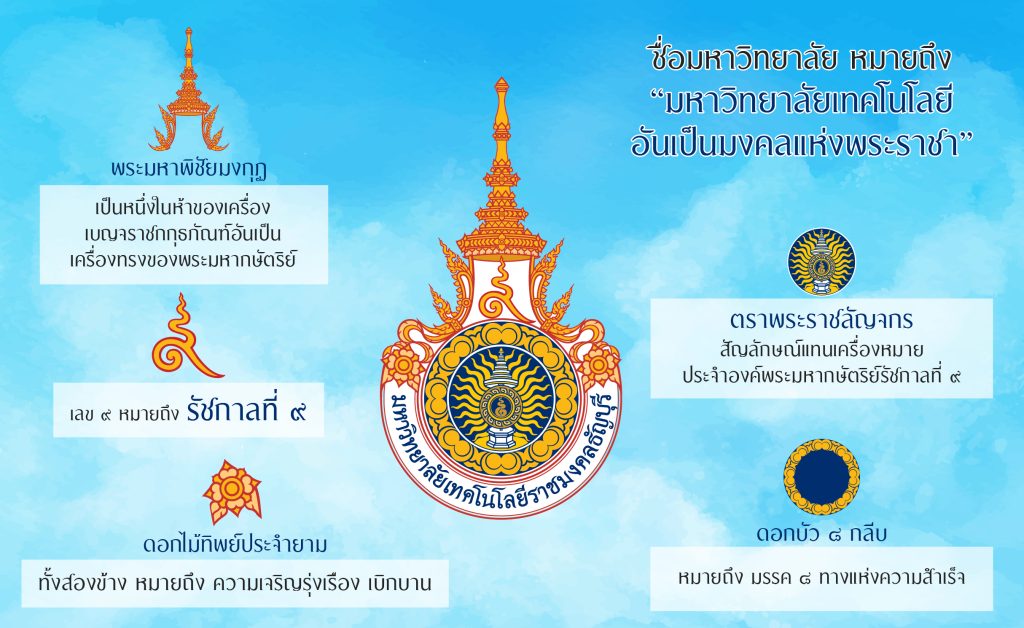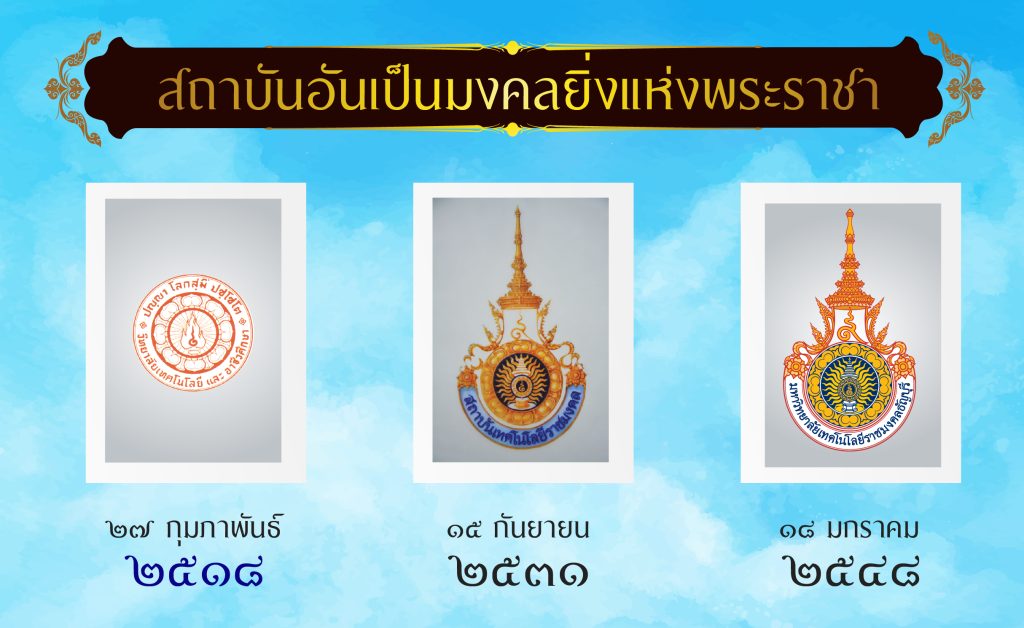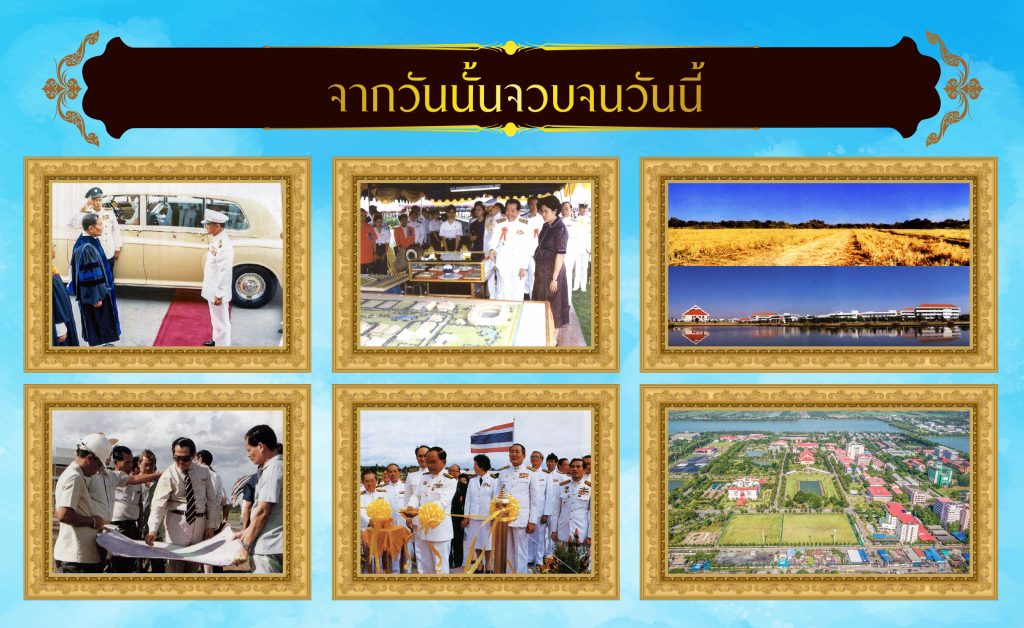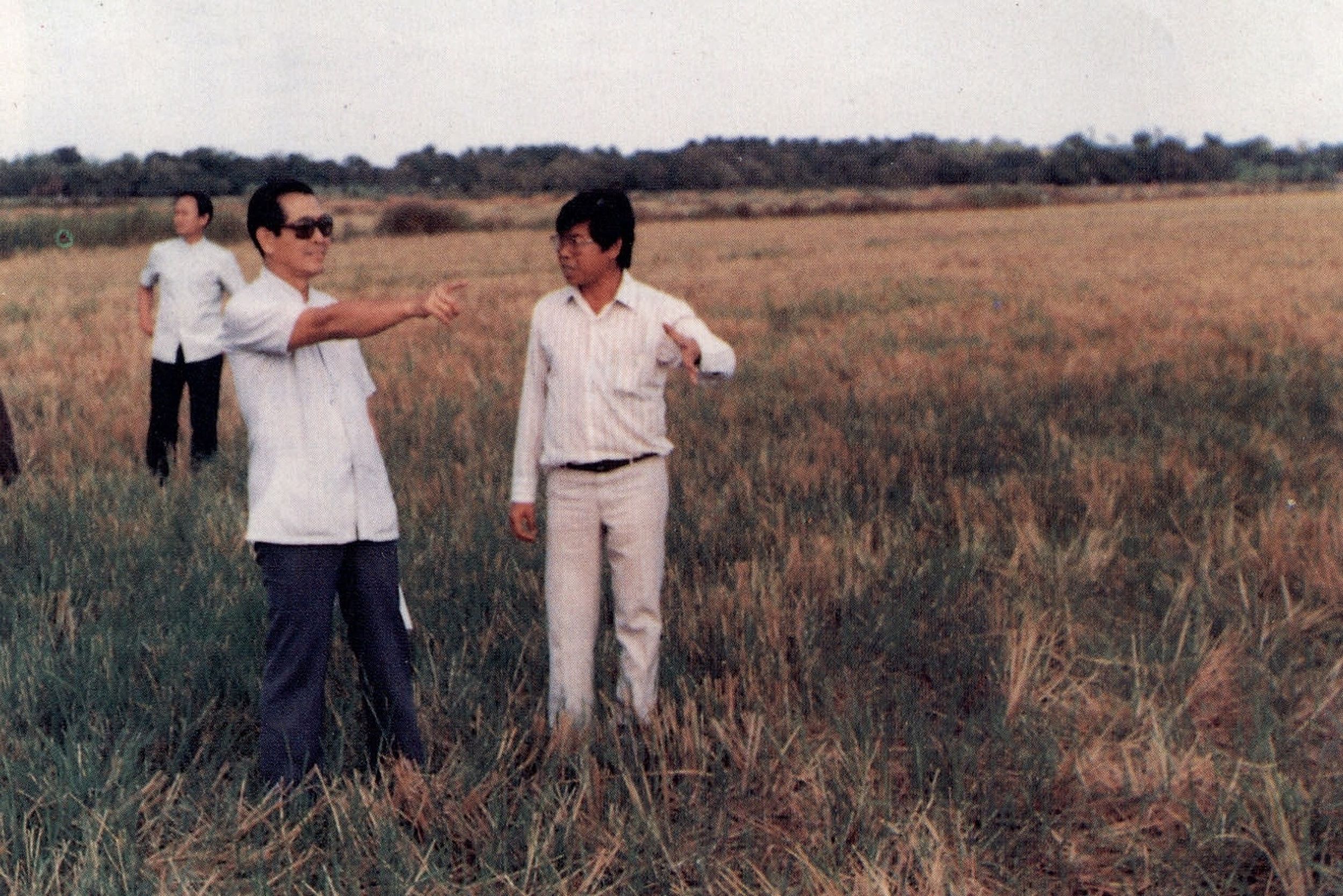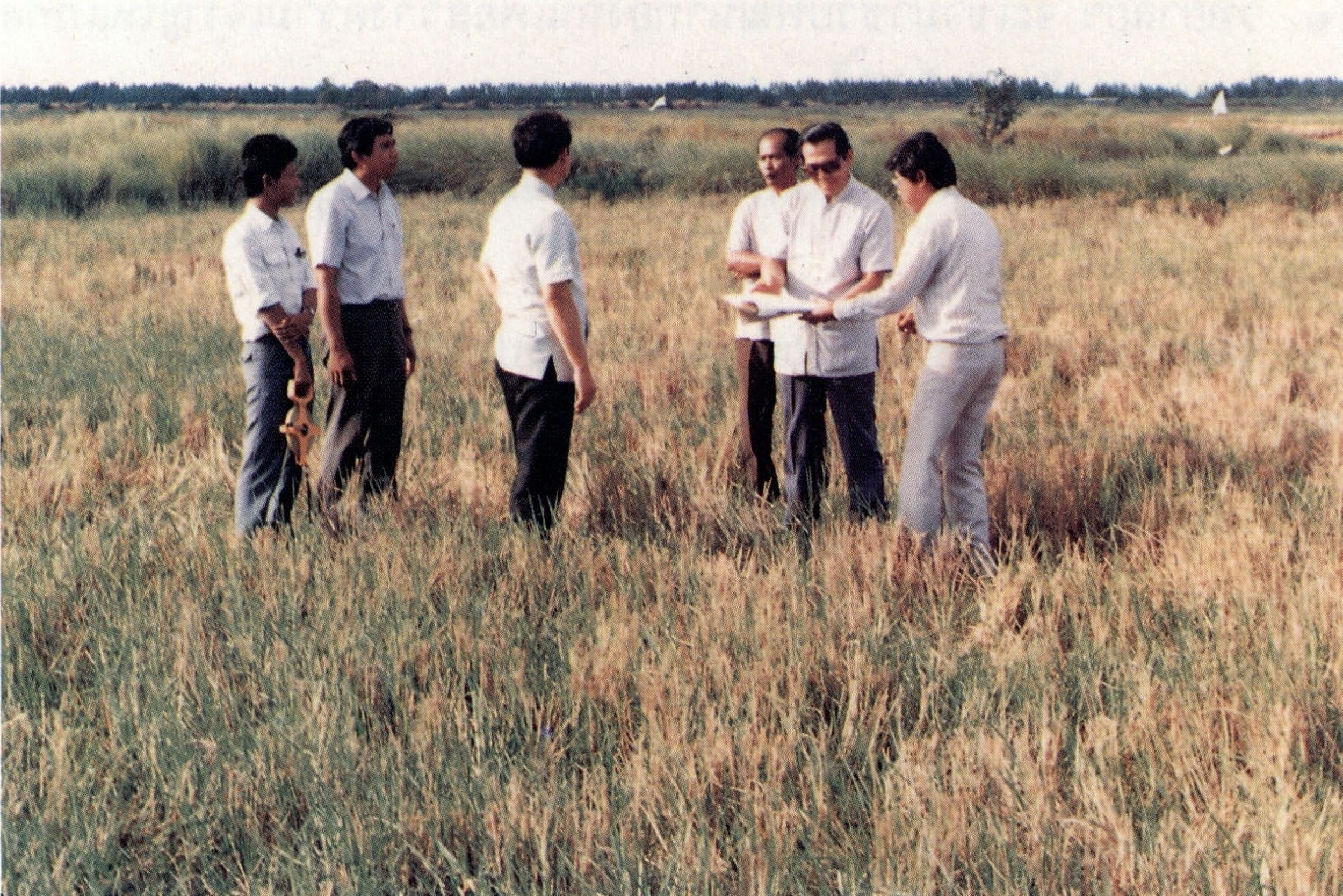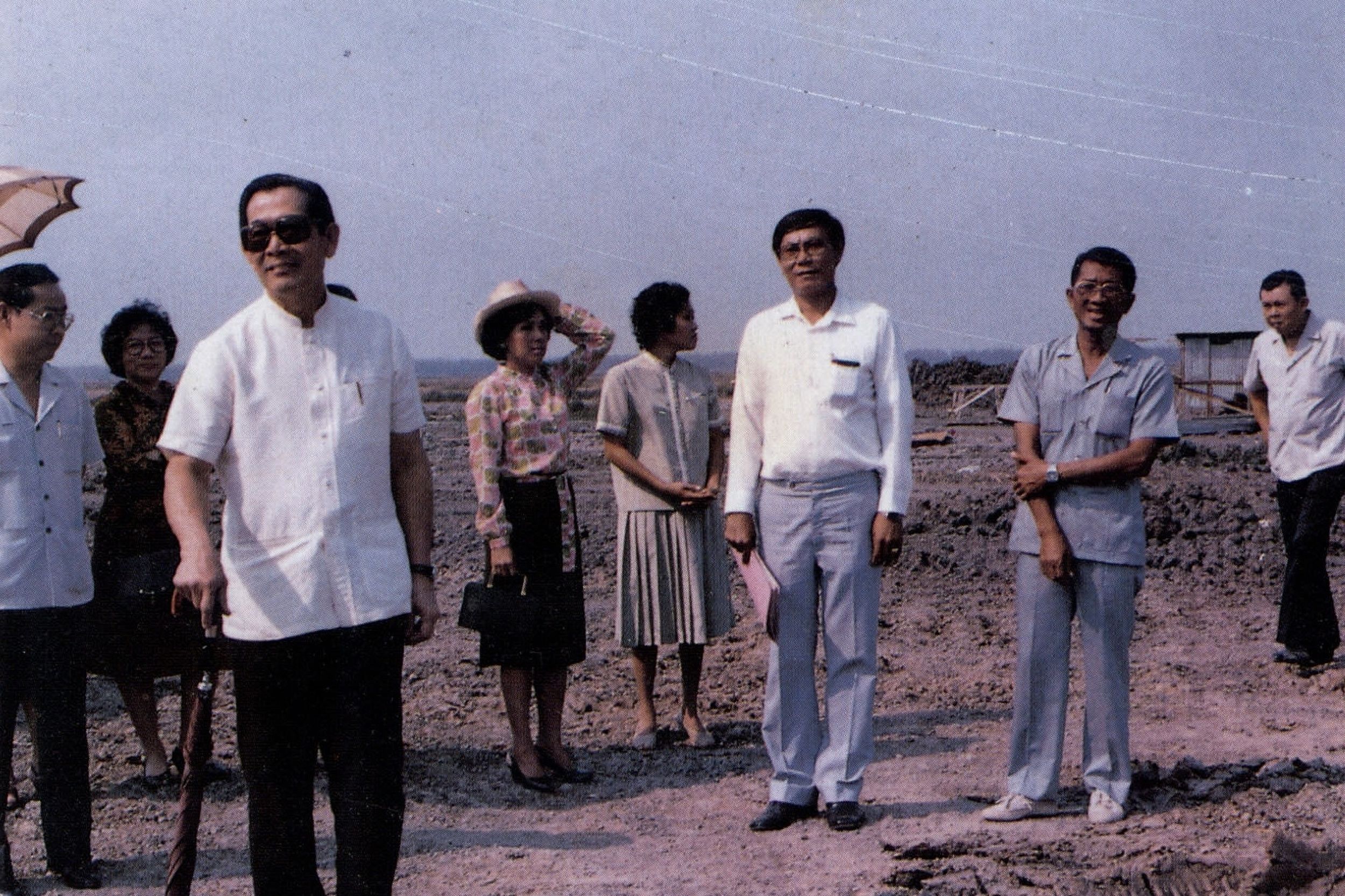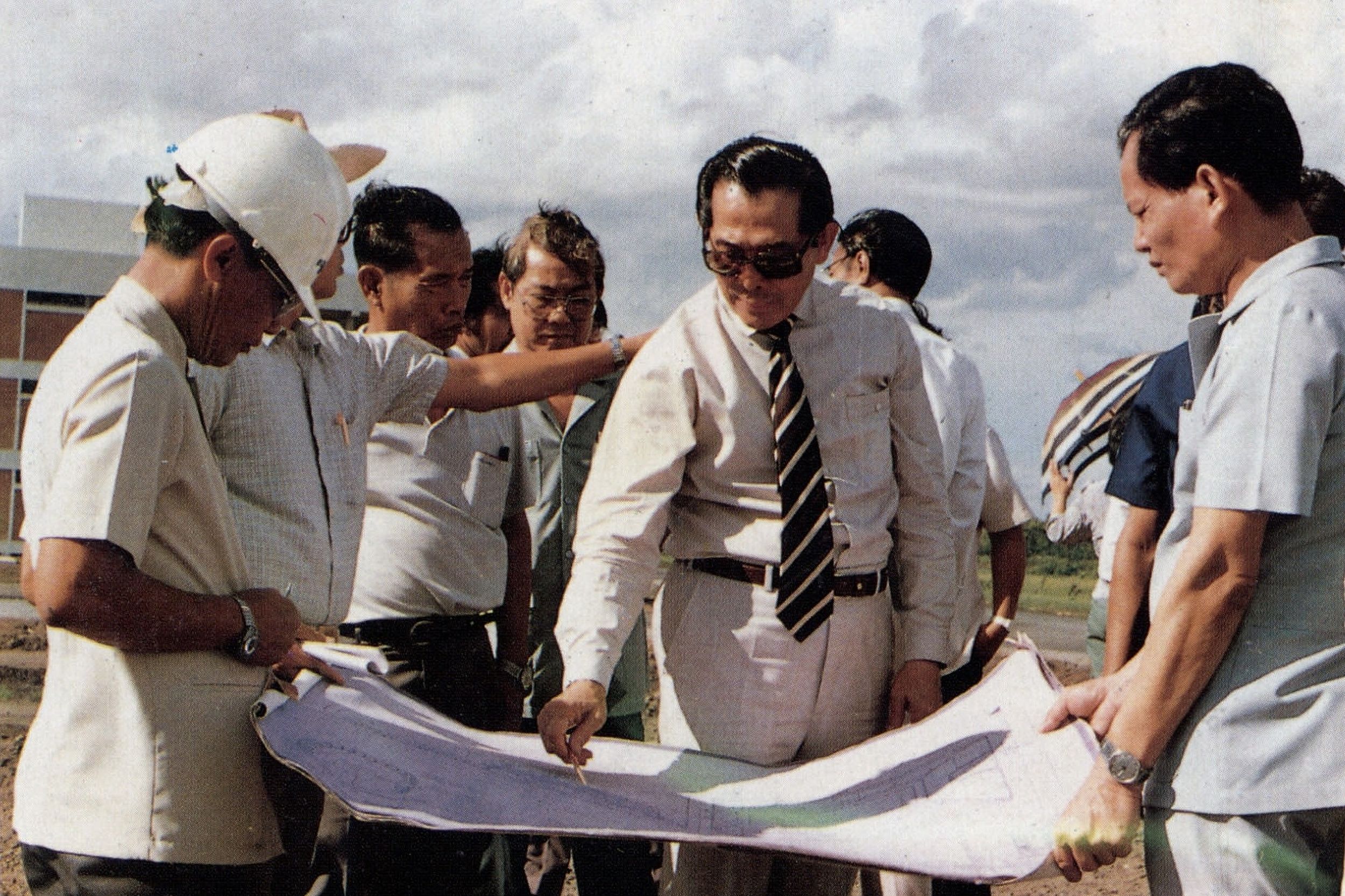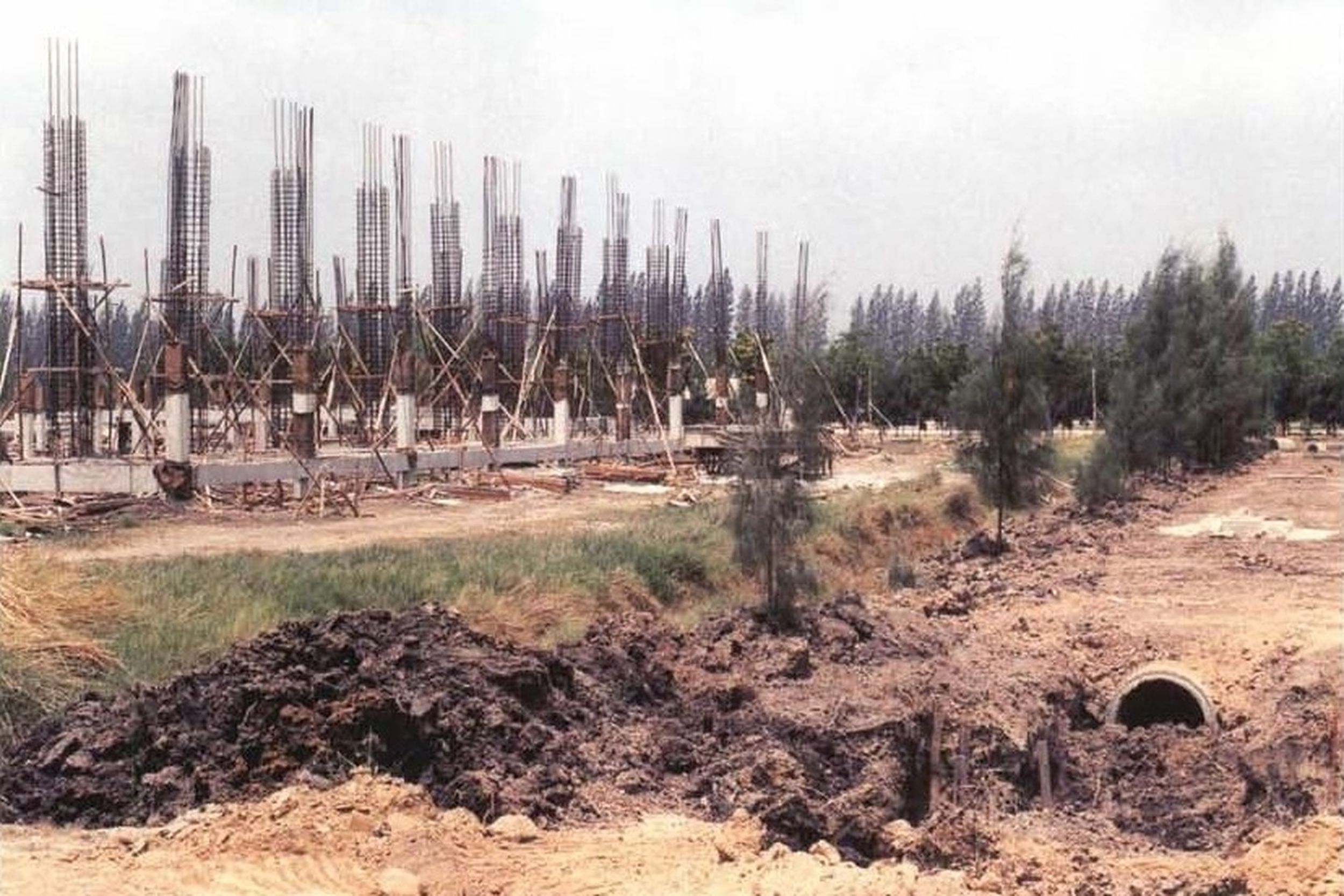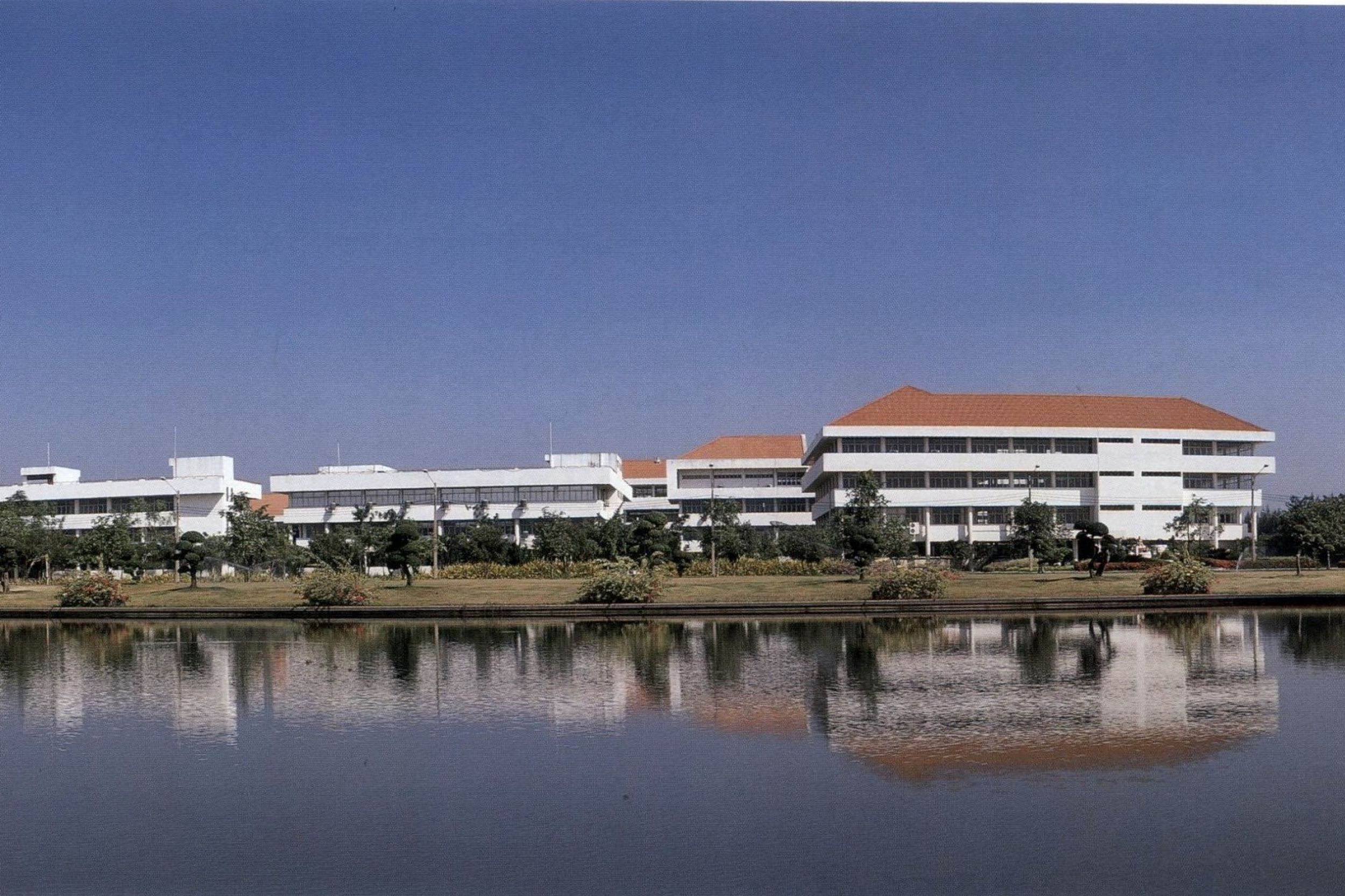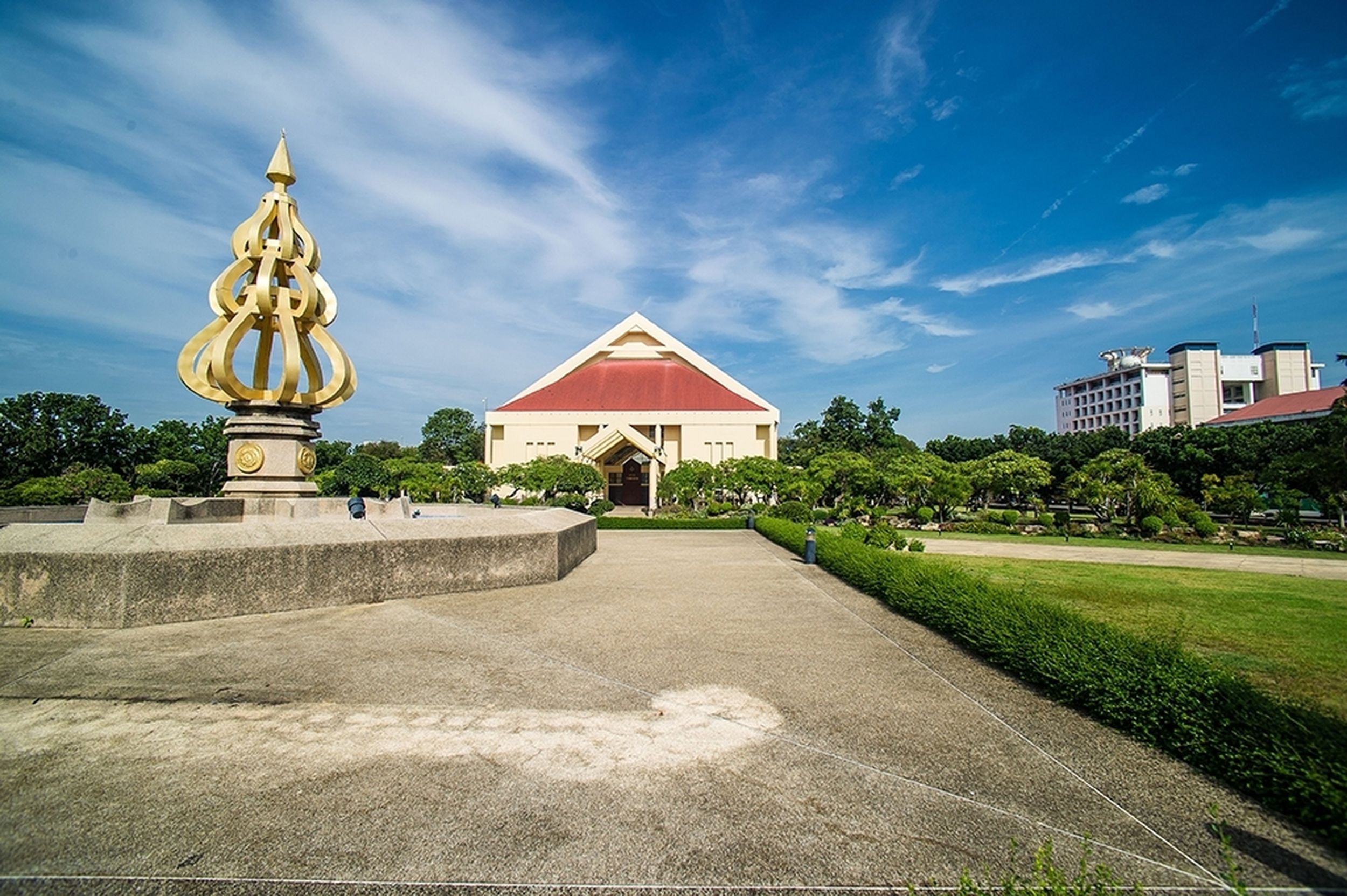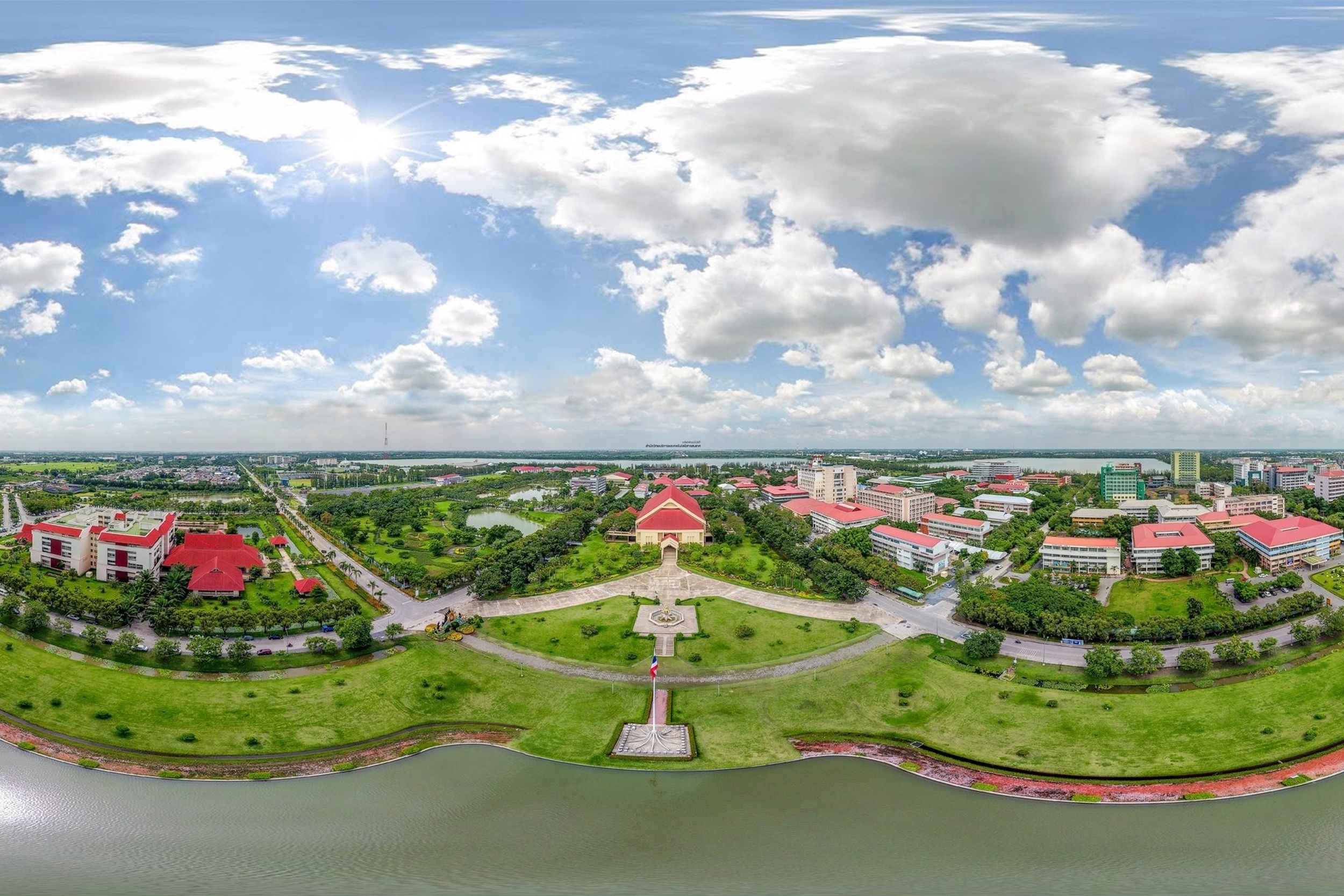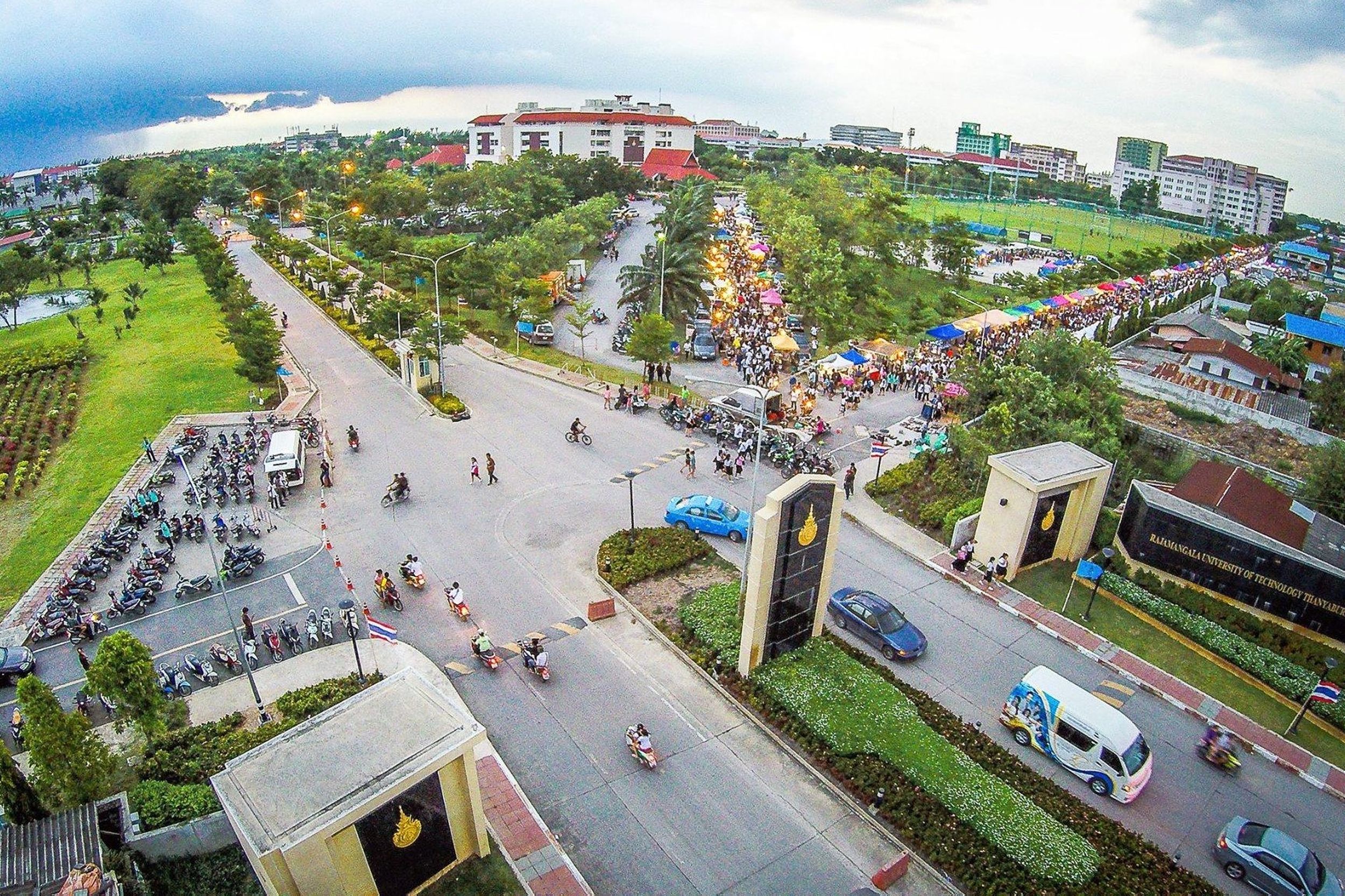Rajamangala University of Technology Thanyaburi

Origin of Rajamangala University of Technology Thanyaburi (RMUTT)
In Thai society, there was historically a differing perception of education's importance, specifically regarding vocational education, which wasn't seen as significant for career preparation. This resulted in vocational students feeling inferior and receiving unjust treatment from the educational system, which only offered education up to the Associate Degree level. Consequently, many vocational students collectively demanded the Ministry of Education to extend education to the degree level. On January 9, 1974, these demands led to a shift in the educational system.
A major development occurred on
February 27, 1975, when the College of Technology and Vocational Education was established under the "1975 College of Technology and Vocational Education Act," published in the Royal Gazette and enacted with the goal of producing vocational education teachers at the bachelor’s level, providing sub-degree, degree, and higher vocational certificate education, conducting research, promoting vocational and technological education, and offering academic services to society.
The university council appointed Mr. Sawat Chaikuna, then Deputy Director-General of the Department of Vocational Education, as Acting Rector on March 28, 1976. He was later royally appointed as Rector on June 12, 1980.
Although the college started classes in 1975, it initially lacked its own facilities due to various policy and operational obstacles. This situation persisted until 1984. It wasn’t until 1984, during Professor Anan Krukaew’s tenure as the second Rector, that the college received land allocation from the Treasury Department: 610-3-41 rai (1 rai = 1,600 square meters) in Khlong Six, west bank of Khlong Luang District, Pathum Thani Province, and 109-3-04 rai in Khlong Rangsit, north bank of Thanyaburi District, Pathum Thani Province, totaling 720-2-55 rai, for establishing the college’s central educational facilities. Afterward, the college appointed a committee to negotiate with the local villagers and farmers to request the use of the land to establish a central educational hub. Initially, no agreement was reached. The dispersed education system of the College of Technology and Vocational Education at that time presented significant challenges and obstacles in teaching, learning, and administration. Even the Office of the President, which coordinated administrative tasks and activities between various faculties, had only one office in the Thewet campus and could not expand due to limited space.

In reality, the College of Technology and Vocational Education urgently needed to organize degree-level education in a quality and efficient manner, saving both time and resources of all kinds. Therefore, there was an idea and effort to consolidate the faculties offering degree programs into one location to enhance flexibility and expand degree-level technology education.
After many negotiations with villagers without land ownership rights, who had lived in the area for a long time, it became a challenge to convey the development plans. Eventually, a considerable understanding was reached with the locals. Alongside, the college sent faculty members to visit and negotiate with everyone from the village head to individual residents, ultimately gaining cooperation from local villagers. Some were willing to dismantle their homes to allow the college access. The college then built embankments, improved the land, and constructed roads in the agricultural area.
The college received substantial cooperation from the villagers of Khlong Six, with many even applying to work for the college. This allowed the college to proceed fully with developing the central hub for degree-level education.
From then on, negotiations took over a year until the renovation and construction began in the fiscal year 1987. By the end of 1987, the College of Technology and Vocational Education requested His Majesty the King to lay the foundation stone for the central educational hub. In response, the Royal Household Bureau conveyed the gracious consent for Her Royal Highness Princess Maha Chakri Sirindhorn to represent His Majesty in laying the foundation stone on Tuesday, June 7, 1988, at 4:09 PM. This event brought immense joy to the faculty, staff, students, and officials of the college.

The college was graciously named "Rajamangala Institute of Technology."
The construction of the central degree education center on 720 rai 2 ngan 45 square wah of public land was successfully completed. The buildings and infrastructure were partially completed and expected to be fully operational by the academic year 1991, which marked the 60th birthday of His Majesty the King. His Majesty kindly conferred degrees to the graduates from the college himself on September 15, 1988, making it a special day for vocational students.
His Majesty King Bhumibol Adulyadej graciously named the institute “Rajamangala Institute of Technology,” which means "The Royal Institute of Technology," signifying the royal endorsement for the faculty, staff, and students of Rajamangala. Since then, Rajamangala Institute of Technology has focused on producing "practical graduates" dedicated to societal service and has been recognized for the quality of its graduates. Thus, September 15 is celebrated annually as "Rajamangala Day," commemorating the royal grace that named the institution.
From "Rajamangala Institute of Technology," it has now evolved into "Rajamangala University of Technology."
It was a significant opportunity for the Rajamangala Institute of Technology when Thailand promulgated its first education law, the National Education Act of 1999, which resulted in the consolidation of all levels of education under the Ministry of Education (new). This act placed higher education institutions that offer degree programs under the Office of the Higher Education Commission. Additionally, it led to the decentralization of educational institutions, allowing for independent and flexible administration in the form of state higher education institutions or autonomous state higher education institutions.
Consequently, the Rajamangala Institute of Technology undertook revisions to the Rajamangala Institute of Technology Act of 1975 to align its administrative and educational management structures with the principles of the National Education Act. This resulted in the transformation of "Rajamangala Institute of Technology" into "Rajamangala University of Technology." On January 18, 2011, nine Rajamangala Universities of Technology were established, each recognized as a fully-fledged technology university.
9 Rajamangala University of Technology
| Rajamangala University of Technology Thanyaburi | www.rmutt.ac.th |
| Rajamangala University of Technology Krungthep | www.rmutk.ac.th |
| Rajamangala University of Technology Tawan-ok | www.rmutto.ac.th |
| Rajamangala University of Technology Phra Nakhon | www.rmutp.ac.th |
| Rajamangala University of Technology Rattanakosin | www.rmutr.ac.th |
| Rajamangala University of Technology Lanna | www.rmutl.ac.th |
| Rajamangala University of Technology Srivijaya | www.rmutsv.ac.th |
| Rajamangala University of Technology Suvarnabhumi | www.rmutsb.ac.th |
| Rajamangala University of Technology Isan | www.rmuti.ac.th |
The development direction of this higher education institution emphasizes managing the university as a comprehensive academic hub, offering various faculties for students to choose from according to their interests. It aims to be a comprehensive university that meets all students' needs, without losing sight of its clear identity as a specialized technology university with roots in vocational education. The goal is to produce quality practical graduates through a well-defined development plan and confident steps towards becoming a standard educational center, guided by a clear vision.
